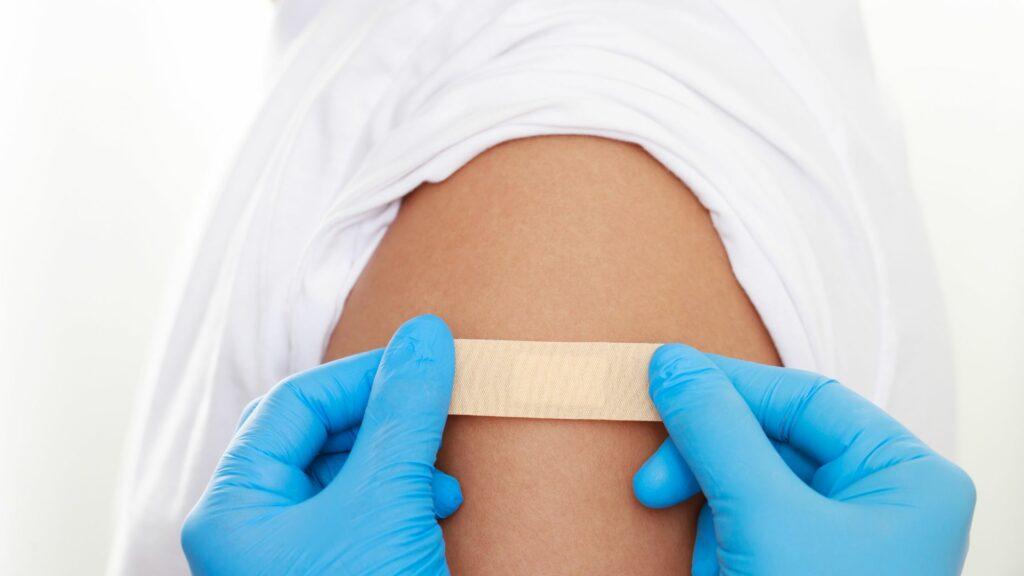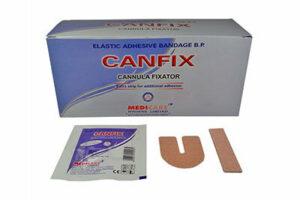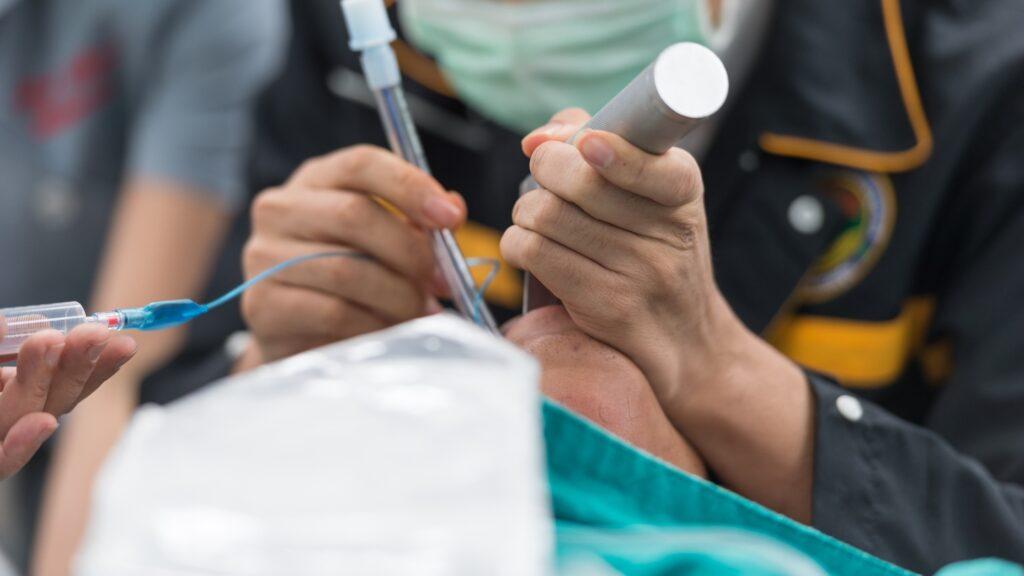The field of healthcare has witnessed remarkable advancements over the years transforming the way we approach medical treatments and patient care. One area that has recently gained significant attention and promises to revolutionize healthcare practices is the development and application of medical adhesives and sealants. These groundbreaking substances have the potential to reshape the future of wound closure and device assembly, offering improved efficacy, convenience, and patient outcomes.
Traditionally, sutures, staples, and other mechanical fasteners have been the primary methods for closing wounds and securing medical devices in place. While effective, these techniques often come with limitations such as tissue trauma, discomfort, and the risk of infection. The emergence of medical adhesives and sealants presents an exciting alternative that addresses these concerns while introducing numerous other benefits.
Medical adhesives and sealants encompass a broad range of materials and formulations designed specifically for medical applications. These innovative substances exhibit excellent adhesive properties, enabling them to bond tissues together or adhere to medical devices to biological surfaces. The result is a secure, flexible, and biocompatible seal that promotes faster healing and minimizes the risk of complications.
The future potential of medical adhesives and sealants extends beyond wound closure and device assembly. Ongoing research and development are exploring their application in targeted drug delivery, tissue engineering, and even regenerative medicine. By harnessing the adhesive properties of these materials, scientists and healthcare professionals can devise innovative solutions to address complex medical challenges and significantly improve patient care.
In this article, we will delve into the fascinating world of medical adhesives and sealants exploring their composition, mechanisms of action and current applications. As we unveil the transformative potential of these revolutionary substances, we invite you to join us on this journey toward a new era of wound closure, device assembly, and medical innovation.
Understanding Medical Adhesives & Sealants
Medical adhesives and sealants are specialized substances that are designed to bond biological tissues or adhere medical devices to biological surfaces. They offer a range of advantages over traditional wound closure methods such as sutures or staples including improved patient comfort reduced tissue trauma and minimized risk of infection. These innovative materials have the potential to revolutionize healthcare practices, offering enhanced efficacy and patient outcomes.
Medical adhesives and sealants offer a promising future for healthcare by revolutionizing wound closure techniques, device assembly, and other medical applications. These advanced materials provide improved patient comfort, enhanced healing, and minimized complications. As research and development continue, the potential for medical adhesives and sealants to contribute to targeted drug delivery, tissue engineering, and regenerative medicine becomes increasingly apparent. With their diverse compositions and mechanisms of action, these innovative substances are poised to shape the future of healthcare, providing novel solutions and optimizing patient care.
Types of Medical Adhesives & Sealants
- Surgical adhesives: Surgical adhesives also known as tissue adhesives or surgical glues are a specific category of medical adhesives that are used to close or bond tissues during surgical procedures. These adhesives offer an alternative to traditional methods such as sutures, staples, or clips, providing several advantages including reduced procedure time, improved cosmesis, decreased tissue trauma, and enhanced patient comfort. Surgical adhesives can be further classified into different types based on their composition and mode of action.
- Cyanoacrylate-based Adhesives: Cyanoacrylate adhesives are commonly used in surgical settings. They polymerize quickly in the presence of moisture forming a strong bond. These adhesives offer excellent tissue adherence and are particularly useful for closing small incisions, lacerations, or surgical wounds. They provide a secure and watertight seal, allowing for faster healing.
- Fibrin-based Sealants: Fibrin sealants are derived from human or animal blood products and mimic the body’s natural clotting process. They are made up of two components fibrinogen and thrombin. Their combination initiates the conversion of fibrinogen into fibrin forming a clot. Fibrin sealants are used for controlling bleeding during surgery, promoting tissue adherence, and sealing vascular grafts.
- Albumin-based Adhesives: Albumin-based adhesives are derived from the protein albumin, typically sourced from human or animal blood. These adhesives are bioabsorbable and can be used for tissue bonding and wound closure. They provide a flexible and biodegradable bond.
- Medical-grade sealants: Medical-grade sealants are specialized substances that are specifically designed and formulated for medical applications. These sealants are used to create a secure and effective seal between biological tissues or to seal medical devices to biological surfaces. Medical-grade sealants offer a range of benefits including improved wound closure reduced risk of infection enhanced device fixation and improved patient comfort. Some common types of medical-grade sealants include:
- Synthetic Sealants: Synthetic sealants are formulated using synthetic polymers and are designed to provide a strong and flexible seal. They are often used in surgical procedures, such as vascular surgeries or gastrointestinal anastomosis, to reinforce or seal tissue or organ connections. Synthetic sealants offer excellent adhesion and sealing properties and can be absorbed or biodegraded over time.
- Biologic Sealants: Biologic sealants are derived from natural sources such as human or animal tissues or blood products. These sealants contain proteins such as fibrinogen and thrombin which helps in the natural clotting process and formation of a seal. Biologic sealants are commonly used in surgical procedures to control bleeding, promote tissue adherence, and support wound healing.
- Hydrogel Sealants: Hydrogel sealants are water-based materials that can retain large amounts of water while maintaining their solid structure. They are biocompatible and can create a moist environment that promotes wound healing. Hydrogel sealants are commonly used in wound care applications, including burn dressings and chronic wound management.
- Adhesive Films: Adhesive films are thin, flexible sheets that contain adhesive properties, allowing them to bond to tissue or medical devices. These films are often used for wound closure or device fixation. They provide a protective barrier reduce the risk of infection and support the healing process.
- Surgical Hemostats: While not strictly sealants, surgical hemostats are used to control bleeding during surgical procedures. They can be in the form of absorbable materials, such as gelatin or collagen-based products, that are applied to the bleeding site to promote clot formation and hemostasis.
Medical-grade sealants are selected based on the specific application, tissue type, desired seal strength, biocompatibility, and other factors. They are commonly used in various surgical specialties including cardiovascular surgery orthopedics general surgery and wound management. The choice of a medical-grade sealant depends on the specific requirements of the procedure the characteristics of the tissue or wound and the desired outcomes for the patient.
Surgical adhesives are typically applied topically to the wound or tissue surface and form a strong bond within a short period. They are particularly suitable for superficial or low-tension wounds but their use may be limited in certain situations such as contaminated or high-tension wounds. Healthcare professionals assess the specific characteristics of the wound, patient factors, and the type of procedure to determine the most appropriate surgical adhesive to use.
It’s important to note that surgical adhesives are not intended to replace all traditional wound closure methods. The choice of the surgical adhesive depends on factors such as the location and type of wound patient factors and the specific requirements of the surgical procedure.
Applications of Medical Adhesives & Sealants
- High-Quality Adhesives for Medical Devices: High-quality adhesives for medical devices play a crucial role in ensuring the secure and reliable assembly of various medical components and devices. The selection of high-quality adhesives for medical devices depends on factors such as the device’s intended use, materials being bonded, sterilization requirements, and regulatory considerations. Healthcare professionals, engineers and manufacturers work together to evaluate these factors and choose adhesives that meet the specific needs of the medical device ensuring its performance, reliability and safety.
- Advanced Sealants for Optimal Wound Care: Advanced sealants play a crucial role in optimal wound care, providing enhanced benefits and promoting the healing process. These specialized sealants offer unique properties and functionalities that contribute to improved wound management. It’s important to note that advanced sealants should be used under the guidance and supervision of healthcare professionals experienced in wound care. The selection of the most appropriate sealant depends on factors such as the type of wound its characteristics and the individual patient’s needs. Healthcare professionals evaluate these factors and choose the advanced sealant that best suits the specific wound care requirements, optimizing the healing process and improving patient outcomes.
Benefits of Using Medical Adhesives & Sealants
Using medical adhesives and sealants offers several benefits in healthcare settings:
- Minimally Invasive: Adhesives and sealants provide non-invasive alternatives to traditional wound closure methods, reducing tissue trauma and patient discomfort.
- Quick and Easy Application: Adhesives and sealants can be applied rapidly, saving time during procedures and allowing for efficient wound closure or device assembly.
- Strong and Reliable Bonding: These products create strong bonds between tissues or medical device components, ensuring secure and reliable attachment.
- Versatility: Medical adhesives and sealants can be used in various applications, including wound closure, device assembly, and tissue bonding, making them versatile tools in healthcare.
- Enhanced Cosmetic Outcomes: Adhesives and sealants create thin, uniform closures that minimize scarring and improve cosmetic outcomes.
- Watertight and Bacterial Barrier: Certain adhesives and sealants create a watertight seal, protecting wounds from external contaminants and reducing the risk of infection.
- Flexibility and Comfort: These products offer flexibility, allowing natural movement and reducing tension on the wound or device site, enhancing patient comfort and reducing the risk of complications.
- Biocompatibility and Safety: Medical adhesives and sealants are formulated to be bioabsorbable ensuring they are safe for use in contact with living tissue and minimizing the risk of adverse reactions.
Overall, the use of medical adhesives and sealants provides minimally invasive, efficient, and reliable solutions for wound closure, device assembly, and tissue bonding in healthcare settings, leading to improved patient outcomes, reduced procedure times, and enhanced patient comfort.
Safety Considerations While Using Medical Adhesives & Sealants
While using medical adhesives and sealants, several safety considerations should be taken into account:
- Biocompatibility: Ensure that the adhesive or sealant is specifically formulated for medical use and is biocompatible, meaning it is safe for contact with living tissue without causing adverse reactions or toxicity.
- Allergy Testing: Conduct appropriate allergy testing, especially if the patient has a history of allergic reactions to adhesives or sealants. Perform a patch test to check for any adverse reactions before applying the adhesive or sealant to a larger area.
- Proper Application: Follow the manufacturer’s instructions for the proper application of the adhesive or sealant. Apply the product in the recommended amount and method, ensuring it is used only on appropriate surfaces or tissues.
- Adequate Ventilation: Use adhesives and sealants in ventilated areas to minimize exposure to potentially harmful fumes or vapors. Proper ventilation helps ensure a safe working environment for both healthcare providers and patients.
- Storage and Handling: Store adhesives and sealants in accordance with the manufacturer’s guidelines including temperature and humidity requirements. Follow proper handling procedures to prevent accidental spills or misuse.
- Compatibility with Other Products: Ensure compatibility between the adhesive or sealant and other materials or products used in the procedure or wound care. Some substances or medications may interact with the adhesive or sealant, compromising its effectiveness or causing adverse effects.
- Adverse Reactions and Monitoring: Monitor the patient for any signs of adverse reactions such as redness swelling pain or infection. Promptly address any concerns or complications that may arise and seek medical attention if necessary.
- Regulatory Compliance: Adhere to regulatory standards and guidelines regarding the use of medical adhesives and sealants. Follow the appropriate protocols and ensure that the products used are approved and meet the necessary safety and quality standards.
It is important to consult with healthcare professionals such as surgeons, wound care specialists or nurses who are experienced in using medical adhesives and sealants. They can provide guidance on proper application techniques, safety precautions and patient-specific considerations to ensure the safe and effective use of these products.
Medical Adhesives & Sealants From Leading Indian Manufacturers
Truseal
Truseal is manufactured by Healthium Medtech Limited, one of the leading manufacturers and global suppliers of medical adhesives & sealants in India. This innovative wound closure device offers a quick and secure solution, along with antimicrobial defense. With Truseal, you can achieve excellent cosmetic results without any discomfort or irritability.
The unique formulation of Truseal, containing the active ingredient n-butyl 2-cyanoacrylate (Enbucrilate), allows it to bond in less than a minute. Its simplicity of use makes it a preferred choice for medical professionals. To ensure convenience and sterility, Truseal comes in a single-use, sterile package.
Truseal not only strengthens and protects the sealed wound or incision but also inhibits the growth of both gram-positive bacteria (including MRSA and MRSE) and gram-negative bacteria in vitro, such as E. coli. This antimicrobial feature adds an extra layer of protection during the healing process.
The packaging of Truseal includes a crushable glass ampoule and a soft micro-needle delivery system. This ensures precise and controlled application, allowing healthcare providers to deliver the adhesive exactly where it is needed. Truseal’s exceptional performance and ease of use have made it a trusted choice for wound closure in medical settings.
CANFIX
CANFIX, produced by Medicare Hygiene Limited, is a high-quality cannula fixator known for its ease of use and uncomplicated removal. This fixator is widely recognized for its non-allergic adhesive with a paper lining, making removal a hassle-free process. The absence of discomfort during removal ensures a positive experience for patients.
CANFIX leaves no traces on the skin after removal, maintaining the patient’s comfort and minimizing any potential skin irritation. The fixator allows air and humidity to circulate freely, promoting a healthy healing environment. Additionally, CANFIX is available in non-sterile options, catering to a range of medical requirements.
The simplicity and effectiveness of CANFIX have made it a preferred choice for securing cannulas during medical procedures. Its innovative design, combined with the use of high-quality materials, ensures optimal performance and patient satisfaction.
Liquiband Exceed
Liquiband Exceed, manufactured by Futura Surgicare Pvt. Ltd., is a premium medical adhesive and sealant that excels in wound closure. As one of the leading manufacturers and global suppliers of medical adhesives & sealants in India, Futura Surgicare has developed Liquiband Exceed with enhanced benefits to facilitate better wound healing. The redesigned tip of Liquiband Exceed offers improved precision and controlled application qualities. This advancement allows healthcare professionals to apply the adhesive with ease and accuracy, ensuring optimal wound closure. The winged applicator provides a secure grip and enables simple activation and priming of the adhesive.
One of the key advantages of Liquiband Exceed is its flexibility, making it suitable for a wide range of wound types. It offers a strong tensile strength equivalent to a suture of 4.0, providing robust wound closure. Liquiband Exceed covers up to 30 cm of wound, offering extensive coverage and increasing cost-effectiveness.
Liquiband Exceed also features a heightened microbial barrier, reducing the risk of infection during the healing process. Its breathable nature, similar to film MVTR (Moisture Vapour Transmission Rate), promotes quicker healing by allowing the wound to breathe. This feature, combined with Liquiband Exceed’s precise control during adhesive expression, makes it an exceptional choice for medical professionals seeking optimal wound closure solutions.
Medzell: Empowering Healthcare with Futuristic B2B Solutions
Introducing Medzell, a futuristic B2B platform that promotes Indian medical devices in emerging markets. In this section, we will provide detailed information about Medzell’s mission, features, and the benefits it offers to healthcare providers and businesses worldwide. Discover how Medzell facilitates seamless transactions, fosters collaboration, and drives innovation in the medical industry.
Conclusion
In this captivating journey, we have traversed the vast landscape of medical adhesives and sealants, uncovering their immense potential in revolutionizing healthcare practices. We explored the realms of surgical procedures, wound closure, medical device assembly, and more, illuminating the benefits and advancements in adhesive technology. Along the way, we intertwined the narrative with the extraordinary initiatives of Medzell, a futuristic B2B platform dedicated to promoting Indian medical devices in emerging markets.
The future of healthcare is bright, thanks to the remarkable synergy between medical adhesives, Medzell, and the tireless pursuit of improved patient outcomes. Embrace this transformative wave, stay informed about the latest advancements, and witness the unprecedented positive impact of medical adhesives and sealants on the global healthcare landscape.





